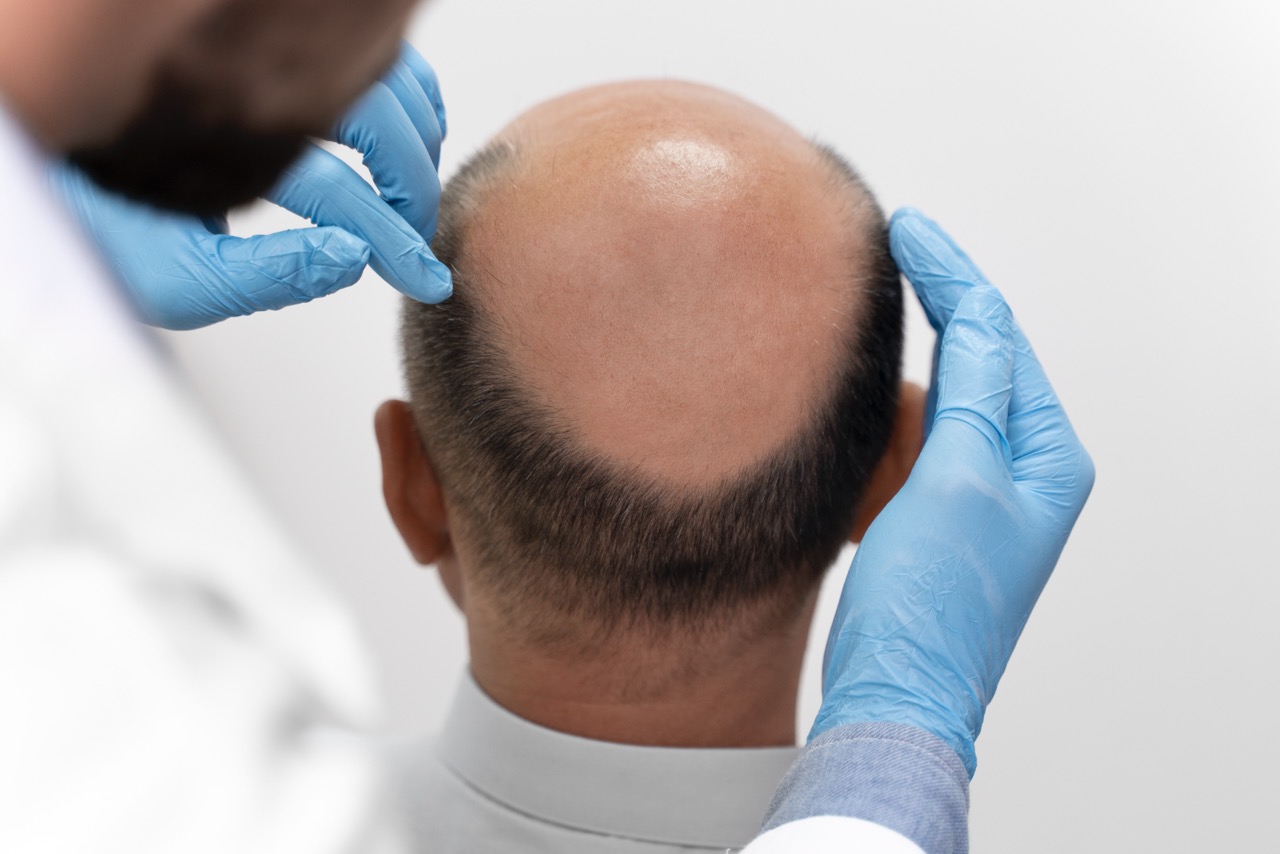Crown (Vertex) Hair Transplant – Is It Effective?
When it comes to hair loss, the crown—or vertex—of the scalp is often one of the most challenging areas to restore. This circular zone at the back of the head can experience significant thinning over time, leaving many wondering whether a crown hair transplant is a viable solution. While transplanting hair to the crown can be effective, it requires careful planning and realistic expectations. Here’s what you need to know.
Understanding Crown Hair Loss
Hair loss at the crown is typically associated with androgenetic alopecia (pattern baldness). In men, this often appears as a bald spot that gradually enlarges over time. For women, it may show up as a widening part or overall thinning in the vertex region. Unlike the frontal hairline, where individual grafts can create a defined shape, the crown’s naturally whorled growth pattern makes it more difficult to achieve full coverage. This is especially true in advanced cases, where the area of loss is extensive and the available donor hair is limited.
Challenges of Crown Hair Transplants
Transplanting hair to the crown presents unique challenges:
Complex Growth Pattern:
- The crown’s hair grows in a swirl, requiring precise graft placement to recreate a natural appearance. If the grafts aren’t placed correctly, the result can look patchy or unnatural.
Higher Density Requirement:
- The crown generally requires more grafts to achieve the appearance of fullness because the area is often larger and the hair naturally spreads out in multiple directions.
Limited Donor Hair:
- Because the donor area (usually the back and sides of the scalp) is finite, restoring the crown can use up a significant portion of available grafts. If future hair loss occurs, there may be fewer donor follicles left for other areas, like the hairline.
Is Crown Transplant Effective?
The effectiveness of a crown hair transplant depends on several factors:
Extent of Hair Loss:
- For patients with moderate crown thinning, a transplant can provide a noticeable improvement in density and coverage. For those with advanced baldness, achieving complete coverage may be more difficult, but significant improvement is still possible.
Donor Hair Quality:
- The quality and quantity of donor hair play a major role in the success of a crown transplant. Patients with dense, healthy donor areas are more likely to achieve satisfying results.
Surgeon Expertise:
- Because the crown’s whorl pattern is so intricate, the skill and experience of the surgeon are crucial. A surgeon who understands the natural growth pattern and places grafts at the correct angles will deliver a more natural-looking result.
Realistic Expectations:
- Crown transplants can restore coverage and density, but they don’t guarantee the thick hair of youth. Many patients find that a crown transplant significantly reduces the appearance of baldness, but the density may be less than what can be achieved in the hairline or mid-scalp regions.
Alternatives and Complementary Treatments
For some patients, a crown transplant alone may not provide the desired level of fullness. In such cases, combining the procedure with other treatments can help:
Medical Therapy:
- Finasteride and minoxidil can help stabilize ongoing hair loss and improve hair density in the crown. Using these treatments alongside a transplant may reduce the need for additional surgeries and enhance overall results.
PRP Therapy:
- Platelet-rich plasma (PRP) injections can boost the growth of transplanted and native hair, helping to maintain density and improve the success of the procedure.
Low-Level Laser Therapy (LLLT):
- Regular use of laser caps or combs can promote healthier follicles and improve the thickness of existing hair.
Crown Transplants in Turkey: A Leading Destination
Turkey has become a top destination for hair transplants, including crown procedures. Clinics in Istanbul, Antalya, Izmir, and Kuşadası offer state-of-the-art technology, experienced surgeons, and competitive pricing. Patients from around the world travel to Turkey for high-quality care and natural-looking results. The country’s top clinics are known for their expertise in handling challenging cases, such as crown restoration, and offer all-inclusive packages that make the process convenient and cost-effective.
What to Expect
A crown hair transplant typically involves:
Consultation and Planning:
- During the initial consultation, the surgeon will evaluate your hair loss, donor area, and overall scalp condition. They’ll create a customized plan that addresses the crown’s unique growth pattern and your individual needs.
Procedure Day:
- The surgery itself is performed under local anesthesia. The donor hairs are extracted—often using Follicular Unit Extraction (FUE)—and carefully implanted into the crown. The procedure can take several hours, depending on the size of the area and the number of grafts required.
Recovery and Growth:
- After the procedure, the transplanted hairs will go through a shedding phase before new growth begins. Within 6–12 months, you’ll see the final results: a fuller, more natural-looking crown that blends seamlessly with your existing hair.
The Bottom Line
Crown (vertex) hair transplants can be highly effective when done by a skilled surgeon and supported by appropriate aftercare. While the crown’s complexity and higher density requirements pose challenges, the right approach—combined with realistic expectations—can lead to a significant improvement in appearance and confidence. Whether you’re seeking to fill in a small thinning area or restore a larger bald spot, a crown transplant can be a transformative solution, especially when performed in one of Turkey’s leading hair restoration clinics.
 English
English














